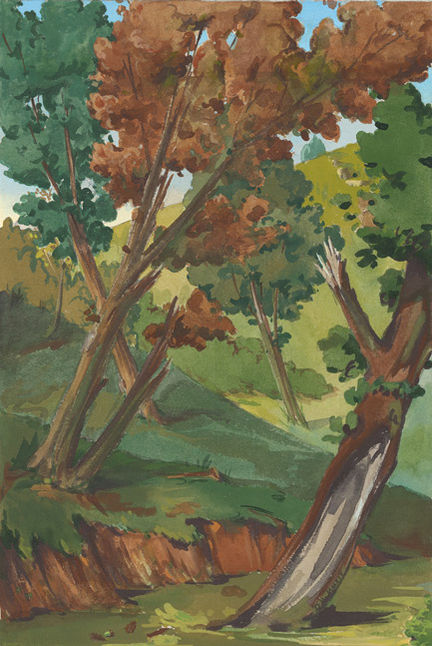
DAVID MAYERNIK
LTD.
Baroque Opera Sets
In the Baroque, some of the finest artists and architects worked for the stage: Filippo Juvarra, Sebastiano and Marco Ricci, Canaletto. I am uniquely dedicated to reviving this role today, enriching both period performances of opera and reciprocally enlivening urban design, architecture, and painting.
For several seasons I painted sets for the Haymarket Opera Company of Chicago's historically informed productions of Baroque operas—Charpentier's Orphée, Purcell's Dido and Aeneas, Telemann's Pimpinone, Charpentier's Actéeon. It was such a pleasure to collaborate with a talented team of musicians, stage directors, and costume designers. My sets, painted on rotating periaktoi (which the Roman writer Vitruvius describes), evoked the period character of each opera.
Theater Research
Creating historically-informed sets for the period staging of Baroque operas intersects research and invention.
Staging an opera in an historically-informed way is one kind of research; it involves putting into practice what is otherwise written or drawn information from the past. This is preceded by more traditional research, in books, libraries and collections, old theaters, and online.




In September of 2022 I spent two weeks in residence at the Fondazione Giorgio Cini in Venice, researching the descriptions of Vivaldi's opera sets at the Teatro Sant'Angelo. No images of his operas' sets survive, but we know that many of them were painted by some of the finest artists in the city at the time, including Marco Ricci. Dott.ssa Maria Ida Biggi, director of the Foundation's Theater Institute, has written about what she calls a scena quadro, a set that is really a large painting, since the San't Angelo's stage was relatively small, as were its budgets. Ricci was a remarkable landscape painter and inventor of capriccj, so I wanted to imagine what a set painted by him may have been like. To arrive at a solution, I attempted a reconstruction of the theater and its stage, studied Ricci's landscape and capriccio compositions, and read the extant libretti in the Institute's collection. That research is contained in the book above, and two imaginary reconstructions of the sets from the opera Orlando are below.

Vivaldi's Orlando, Act I Scene 1: "Delightful garden of Alcina next to the palace of the same, in the garden there are two fountains of which one extinguishes, and the other incites Love: Stormy sea in the distance." (from the libretto, Biblioteca della Fondazione Cini, Venice)
gouache on sheepskin, 2023

Vivaldi's Orlando, Act II Scene 4: "a field at the base of a hill, with woods to one side, in the shade of which you see a picnic setting, with nuptial cups of Angelica and Medico" (from the libretto, Biblioteca della Fondazione Cini, Venice)
gouache on sheepskin, 2022














